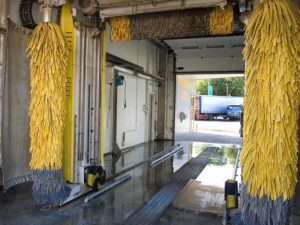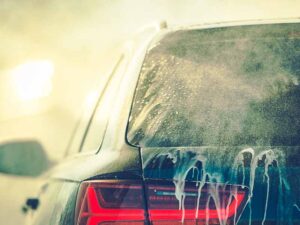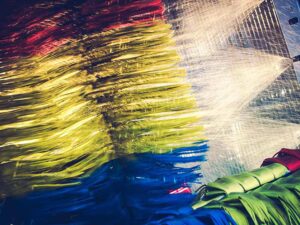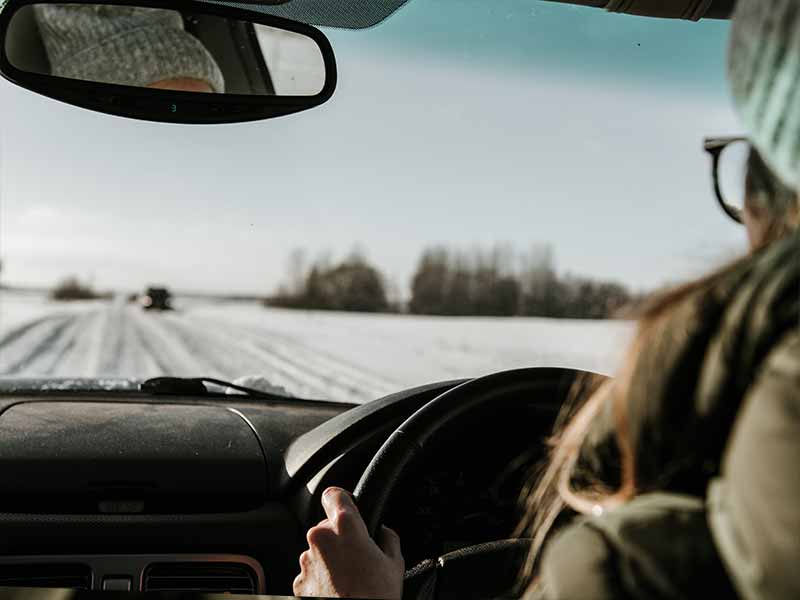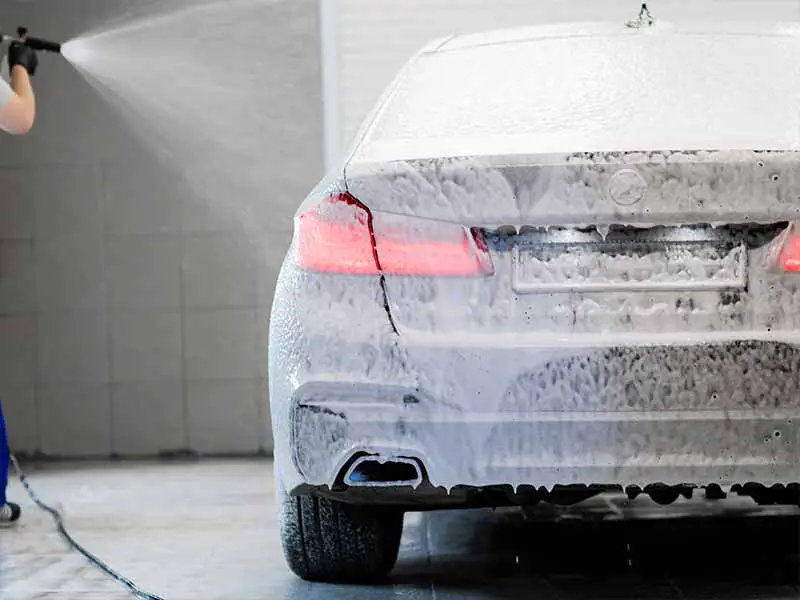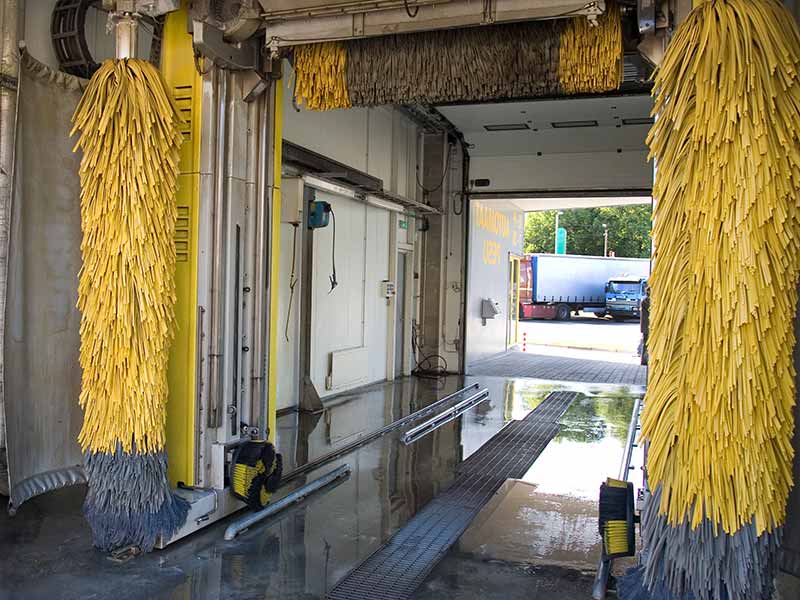Table of Contents
- What pressure washer nozzle is safe for car washing?
- Guide To Pressure Washer Nozzles
- Best Pressure Washer Nozzle For Car Washing?
- Can Pressure Washers Damage Car Paint?
- How Much PSI Should A Pressure Washer Have For Washing A Car?
- What To Look For In A Pressure Washer
- How to Safely Use a Pressure Washer
- Pressure Washer Vs Hose Car Wash
- Apply the Right Type of Pressure
Pressure washing your car can blast away stubborn dirt and debris. But with high water pressure comes responsibility. Do you know what pressure is safe for your car or truck? Knowing the answer can mean the difference between a clean car and one stripped of paint.
What pressure washer nozzle is safe for car washing?
Both green and white pressure washer nozzles can safely be used to wash your vehicle. Green fans the spray by 25 degrees and white fans the spray by 40 degrees. By fanning the spray out this much the pressure is spread across a much larger area and made much safer for your finish.
White nozzles are the gentlest of the four available colors, which determine the angle, pressure, and amount of water that flows through the nozzle. Green pressure washer nozzles add a bit more pressure, but they’re still safer to use than yellow or red pressure washer nozzles. These latter two nozzle colors can strip the skin from your body if you’re not careful.
All the same, there are certain ways you can still damage the paint. However, with care and attention to detail, you can avoid damaging the paint and causing more harm than good.
Below, we’ll introduce you to the pressure washer nozzles available to you and guide you in best practices for washing your vehicle with a pressure washer. The trick is knowing what you’re working with before you dive in, so reading this article will help you get one step closer to a cleaner car that’s washed safely and correctly.
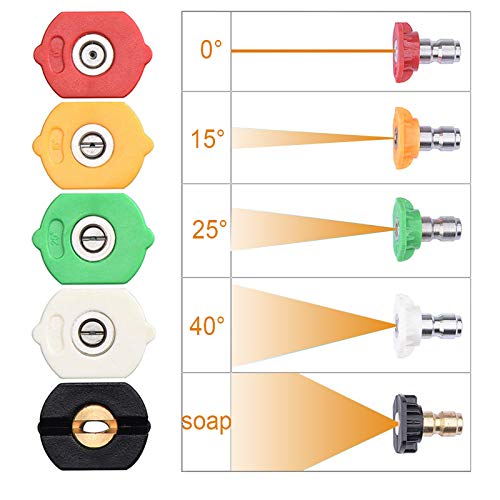
Guide To Pressure Washer Nozzles
Using the right nozzle to wash your car is critical. While different types of nozzles work well for particular applications, a few do not mix well with automotive surfaces.
Pressure washer nozzles are color-coded, which corresponds to a degree. This degree describes the pattern of flow coming out of the nozzle. Changing between these nozzles can effectively increase or decrease your pressure (PSI) and/or flow (GPM).
Red: 0 Degree Nozzle
Red nozzles are zero degrees, meaning a straight stream of water coming from the nozzle opening. While this might seem like a good thing, all the pressure behind that nozzle is going to a very small spot. This could damage whatever is in that spot, whether it’s paint or skin.
Yellow: 15 Degree Nozzle
Yellow nozzles are a bit tamer, with a 15-degree fan. Again, there’s still quite a bit of pressure behind this narrow opening, so the water coming out still packs a punch. This type of nozzle works best for pressure washing a driveway or removing debris from sidewalk cracks.
Green: 25 Degree Nozzle:
The green 25-degree nozzle is an excellent choice for retaining a good amount of power for blasting away at stubborn road grime without too much concern for potential damage. The water jet is more defused than the aggressive 15-degree nozzle but has substantially more cleaning power than the white 40-degree nozzle.
White: 40 Degree Nozzle
This nozzle is the way to go when it comes to gently washing your car. This 40-degree white nozzle isn’t as strong at removing stubborn debris as 25-degree green nozzles. However, you can safely use this nozzle to remove contaminants from your paint without having to worry about damaging paintwork or more fragile trim.
Best Pressure Washer Nozzle For Car Washing?
The green nozzle and white nozzle are the best pressure washer nozzles to use when washing your car or truck. The green 25-degree nozzle is ideal for cleaning away stubborn grit and dirt, while the white 40-degree nozzle is excellent for general rinsing and use when a car is less dirty.
Can Pressure Washers Damage Car Paint?
Yes, using the wrong pressure washer nozzle can damage your paint. Pressure washer nozzles that get too close to paint can scratch your car as well.
Automotive paints are meant to withstand plenty of hazards. But as time goes on and the clear coat wears down, the paint beneath becomes more and more vulnerable. Directing a few thousand PSI of water at a small spot on that paint can do a lot to compromise it. Pressure washer nozzles have blunt edges that can scrape off paint just as easily as any other road or parking lot hazard.
How Much PSI Should A Pressure Washer Have For Washing A Car?
It’s important to consider the pressure of your pressure washer and ensure you choose the proper colored tip. 2000 PSI is regarded as a safe amount of pressure for washing your car or truck without much worry of damaging the paint or more fragile bits of trim.
A red nozzle will not reduce this pressure at all, but each of the others will spread the force across the surface area of your vehicle and effectively reduce the pressure. You should also maintain a reasonable distance from the surfaces you’re cleaning to reduce the pressure as well.
What To Look For In A Pressure Washer
The best automotive pressure washers efficiently use water and power to wash your car. They’re durable and portable so that you can use them outside without having to worry about damaging them beyond use.
If you’re looking into a pressure washer, check the pressure and flow ratings first. It’s acceptable to go with a pressure washer that’s rated for high pressure, as long as you keep this in mind when you wash your car. The flow rating should tell you how much water you should expect to go through, so you can account for this when paying your water bill.
The best pressure washers may be electric or gas, depending on your preference. A long hose makes maneuvering more manageable, and the ability to heat your water improves your efficiency immensely. The ability to adjust pressure can give you flexibility as well. A pressure washer that folds up to store compactly can give you more room in the garage.
- Flow: 2 GPM Min
- Pressure: 2000 PSI Max
- Electric pressure washers are lighter and more maneuverable
- Gas pressure washers can easily exceed 2000 PSI
- Pay attention to warranty details on electric pressure washers
How to Safely Use a Pressure Washer
Pressure washing your car might seem like a self-explanatory task. However, there are a few things you’ll want to keep in mind to optimize your washing process. Let’s start with getting your car ready to wash.
Prepping Your Car
The environment in which you wash your car has a significant impact on your results. There’s a reason car washes are covered and include a drain in the center of the bay. It’s best to wash your car out of direct sunlight, as the heat could dry the soap onto your paint. Removing soap from underfoot boosts the safety factor as well.
Gather your cleaning products and materials, such as car wash soap, a sponge, a bucket, and drying cloths. Chamois drying cloths work well to remove water quickly without soaking up too fast. Hook up your pressure washer and insert either a green or white nozzle. If you want to presoak your wheels, apply those chemicals now.
Rinse First
The next step is to soak your car with water, being as thorough as is necessary. Sweep the pressure washer nozzle in an arc, from one side of your body to the other, overlapping the spray. Rinsing from the top of your vehicle down works the water efficiently to remove debris. Rinsing from top to bottom allows the water to push the debris downwards.
Important: When pressure washing a car equipped with a clear bra, be sure to avoid clear bra edges. Too much direct pressure against the edge of the film could cause it to come off the paint. It’s best to approach these areas with a spray directly above or behind the edge. Keeping the nozzle aimed away from the clear bra edge allows the water to flow away from the lip of the clear bra.
When it comes to wheel wells, get the pressure washer nozzle directed towards the overall arc. Again, work from the center of the wheel well (it’s the highest point) down, directing dirty water down and off the car. Wash your wheels after you clean the wheel wells, as they will get dirty in the process.
Wash Second
Once your car is rinsed, bring out the car wash and sponge. Begin working from the car’s roof down, applying just enough pressure to keep the sponge on the paint. Too much pressure could cause any contaminants to scratch the surface beneath. Overlap your wash passes to ensure you’re cleaning every inch of the paint.
Sudsy cars require another rinse. Ensure that you’re directing the water in cracks and crevices, such as trunk lid gaps, door jambs, and window trim. A second rinse is also an excellent time to recheck your wheel wells. Checking your wheel wells will make sure you clear out all the debris.
Pressure Washer Advice
Here are a few tips and tricks you can use while cleaning your car:
- Start at the same spot on your car as you rinse and wash it. Starting in the same location will help to ensure you cover the entire vehicle and give you a routine to follow.
- Don’t forget hard-to-reach areas such as windshield cowls, front diffusers, and rear bumper pieces.
- Move the pressure washer hose around the car, getting low to the ground or arcing around the wheel wells if necessary. Coming at the debris from multiple angles will help loosen and remove it.
- Before you use a nozzle, make sure the part is seated in the pressure washing unit. The tip of the nozzle should not come flying off when you run pressure through it. Point the tip a safe distance away from you and your car to ensure the nozzle has adequately seated.
Keep these in mind as you use your pressure washing machine to get the most out of the experience.
Dry Your Car Last
After you’re done pressure washing, break out the towels and/or chamois. Moving from the top of your car down, dry the surfaces with overlapping wipes. If you own an air compressor, you can also use an air blowgun. These make quick work of the drying process and can help get water out of hard-to-reach places.
Pressure Washer Vs Hose Car Wash
For those of you who’ve been using the garden hose to clean your car, there’s a better, faster solution: a pressure washer. Pressure washers come in handy in many situations, not just in the automotive world. Many professionals use these machines to clean backyard decks and driveways, to name a few. But when it comes to operating a pressure washer, knowing what you’re doing is critical for safety.
The most significant difference between a garden hose and a pressure washer lies in the pressure and flow. Pressure is measured in pounds per square inch or PSI. Flow is rated by gallons per minute or GPM. Garden hoses typically have low pressure and relatively low flow (around 50 PSI and 12 GPM), while pressure washers are much stronger but have a more efficient flow (about 1500 PSI and 8 GPM).
A pressure washer can be electric- or gas-powered. These motors take water and pressurize it to flow through a hose and out the nozzle. Depending on what type of nozzle you use, your pressure could be low, medium, or high.
Using a pressure washer with the appropriate nozzle will blast away loose dirt and road grime better than a low-pressure garden hose. This alone makes it safer to follow with a wash mitt. Less grit between your wash mitt and paint will help prevent the chance of swirls and scratches.
Also, a pressure washer combined with a foam cannon can coat your car or truck with a thick layer of foam that can break down the bonds that road grime has with your clear coat without physically touching your finish. Using a pressure washer makes it possible to do a completely touchless car wash and almost completely avoid any chance of leaving scratches in the paintwork.
Apply the Right Type of Pressure
Pressure washing your vehicle can be a rewarding experience. You get the benefits of a drive-thru car wash without having to pay for the service.
We hope this article has helped you understand pressure washing and what pressure washer nozzle is safe for car washing.
Invest in the right pressure washer, and you could be cleaning all kinds of things around the house, including your car or truck.



